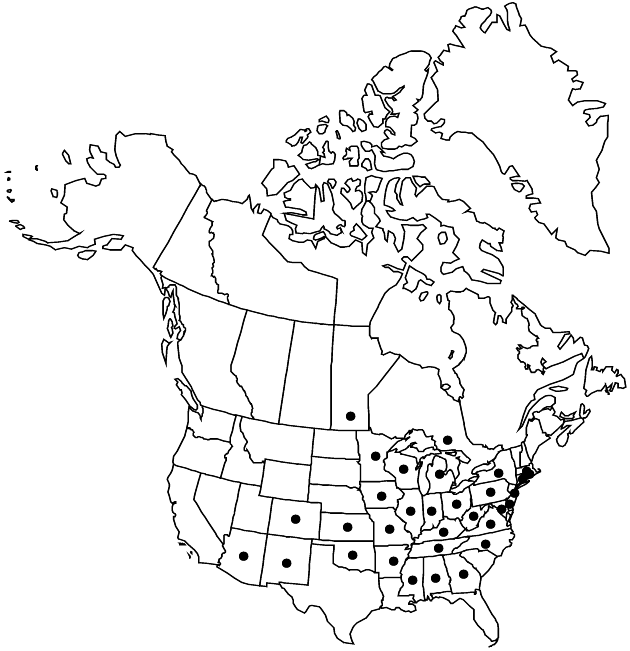Krigia biflora
Rhodora 17: 135. 1915.
Perennials, 10–70 cm; caudices stout, fibrous-rooted (sometimes propagating by adventitious-buds on roots). Stems 1–5+, erect, scapiform, eglandular or glandular-villous distally. Leaves mostly basal (rosettes), some cauline (proximal); petioles ± winged; blades oblanceolate to obovate or spatulate, 5–25 cm, margins entire or remotely dentate to pinnately lobed, lobes narrow to bluntly triangular or rounded, apices acute to obtuse or rounded, faces glabrous, eglandular (usually glaucous); cauline 1–4, sessile, lanceolate, bases sheathing or auriculate-clasping, usually entire, distalmost sometimes reduced, bractlike. Heads (2–) 3–20+. Peduncles usually in groups of 2–6 from axils of single or paired distal cauline bracts. Involucres 7–11 mm. Phyllaries 8–18, reflexed in fruit, lanceolate, midveins obscure, apices acute, faces glabrous. Florets 25–60; corollas orange or yellow-orange, 15–25 mm. Cypselae reddish-brown, columnar, 2–2.5 mm, 12–15-ribbed; pappi of ca. 10 outer scales 0.3–0.5 mm plus 20–40, barbellulate inner bristles 4.5–5.5 mm. 2n = 10, 20.
Phenology: Flowering Apr–Aug.
Habitat: Sandy, loam, or humus soils, shaded mixed mesophytic, beach-maple, oak-pine, and oak-hickory woods. often near streams, meadows, moist prairies, and Madrean woodlands
Elevation: 10–2300 m
Distribution

Man., Ont., Ala., Ariz., Ark., Colo., Conn., Del., Ga., Ill., Ind., Iowa, Kans., Ky., Md., Mass., Mich., Minn., Miss., Mo., N.J., N.Mex., N.Y., N.C., Ohio, Okla., Pa., R.I., Tenn., Va., W.Va., Wis.
Discussion
Krigia biflora is known from the Eastern deciduous forest biome, tallgrass prairie, Rocky Mountain forest, and Madrean woodlands. It appears to spread clonally by adventitious buds on the roots. It is related to the more leafy-stemmed, freely branching K. montana (K. J. Kim and B. L. Turner 1992); their habital differences are less clear where they are sympatric in the southern Appalachians. An alloploid hybrid between them has become established (see 3. K. montana).
Selected References
None.
Lower Taxa
"fine" is not a number.